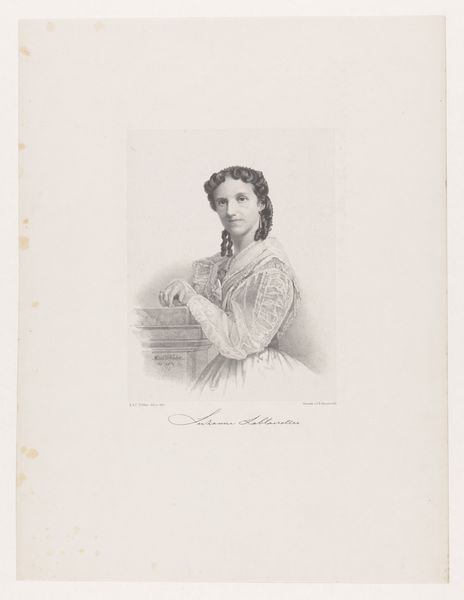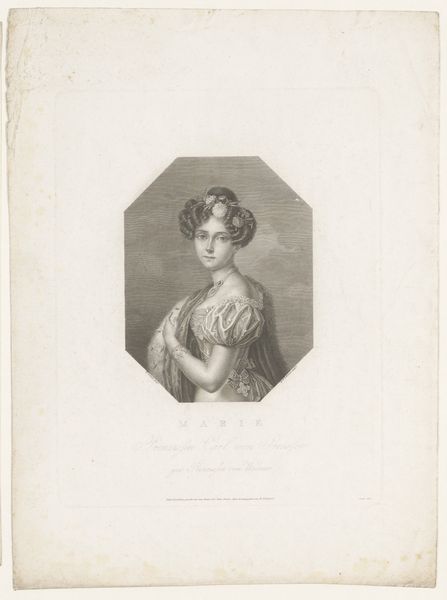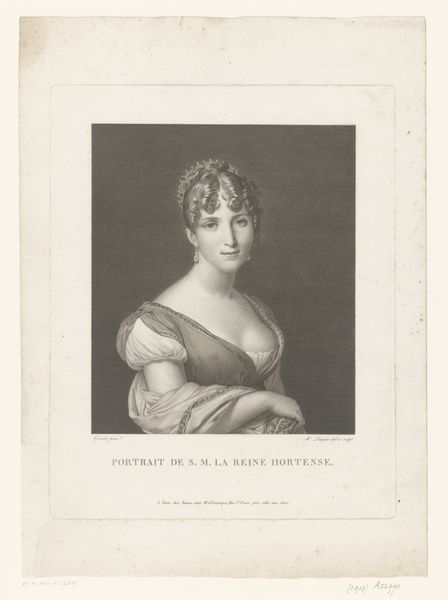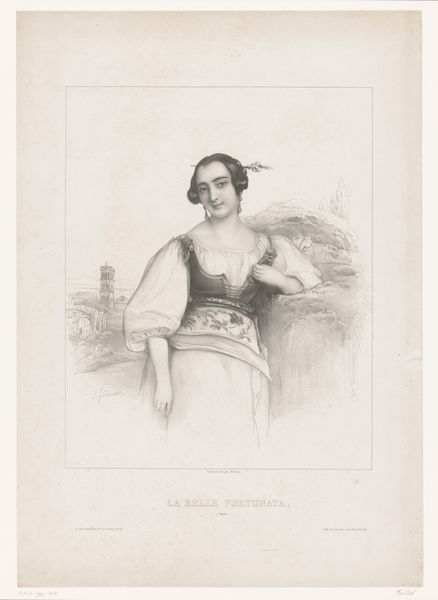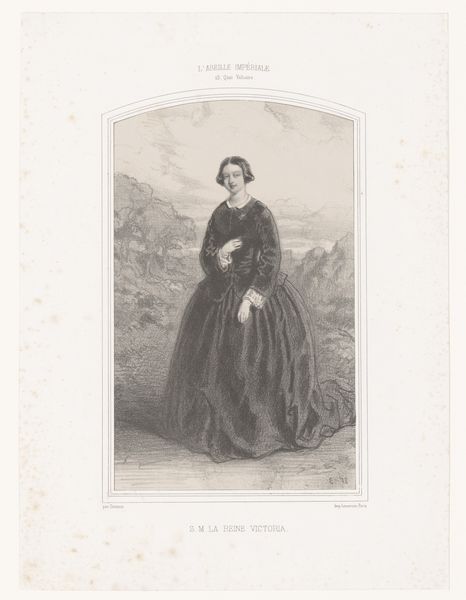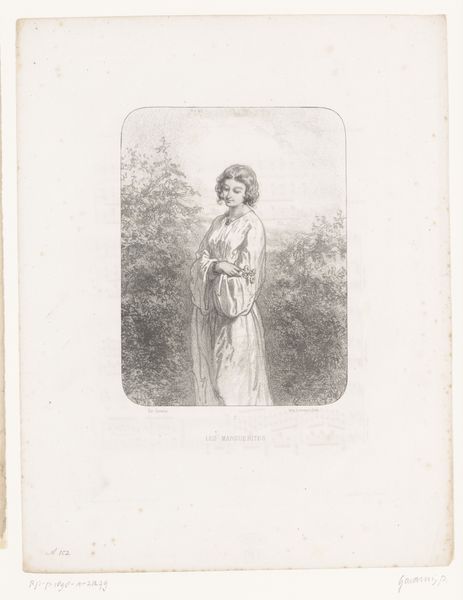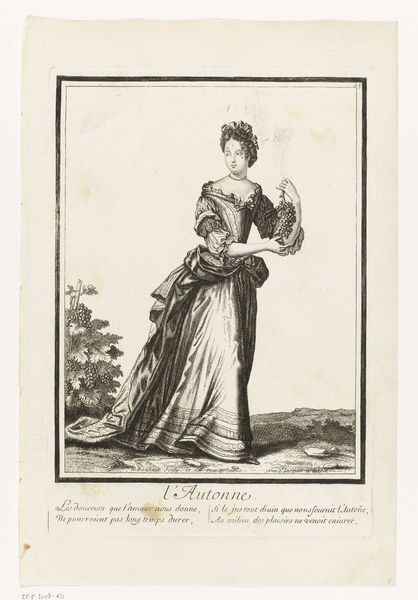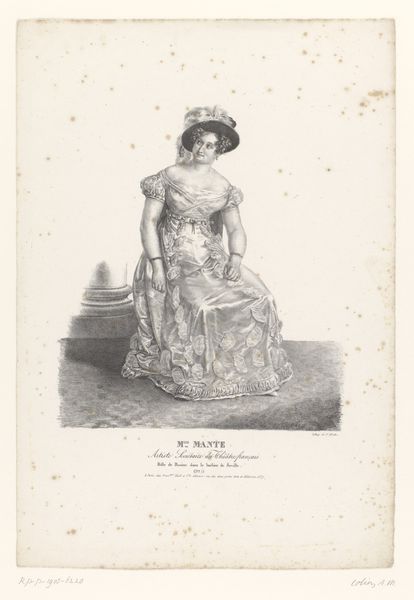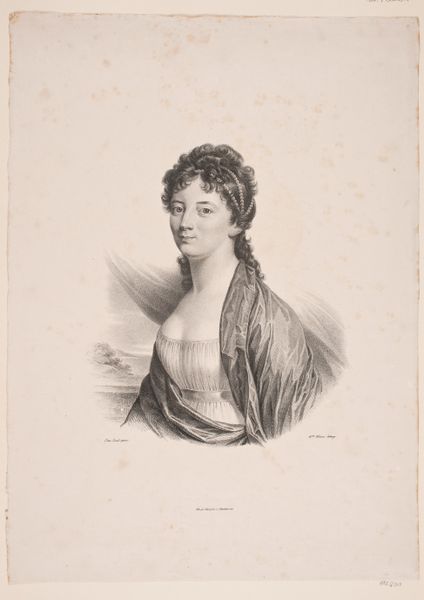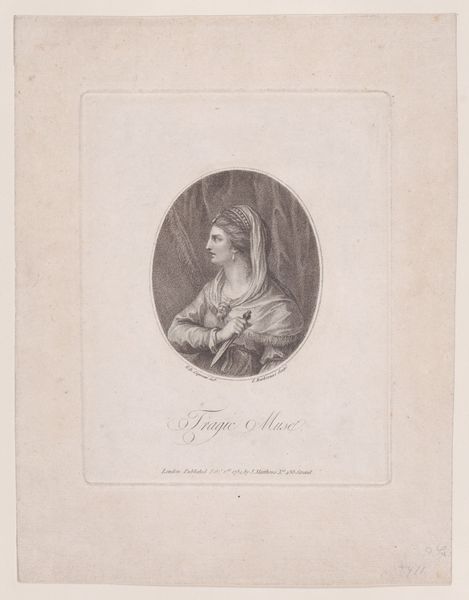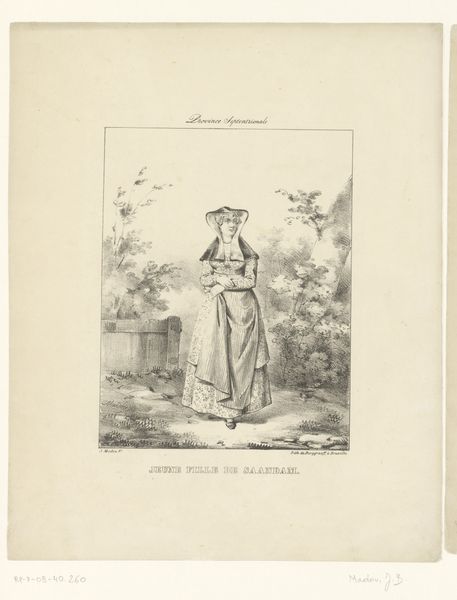
#
photo of handprinted image
#
picture layout
#
light pencil work
#
pastel soft colours
#
pale colours
#
photo restoration
#
light coloured
#
white palette
#
joyful generate happy emotion
#
old-timey
Dimensions: height 273 mm, width 179 mm
Copyright: Rijks Museum: Open Domain
Editor: So this is Jacques Etienne Pannier's "Portrait of Hortense Eugénie de Beauharnais," dating roughly between 1812 and 1869. It feels like a fairly formal portrait, yet the setting – what looks like a garden – softens the overall effect. What's your take on this piece? Curator: Well, the subject, Hortense, was Queen Consort of Holland. So immediately, that context—her position and power—shapes how we understand this portrait. It’s not just about representing her likeness, but also reinforcing her status. Editor: I see. How does the portrait achieve that effect? Curator: Think about the conventions of portraiture at the time. Formal portraits of the elite served a very specific purpose: to project an image of authority, elegance, and legitimacy. Her serene expression, the elegant drape of her gown—these are all carefully constructed visual cues. The "soft" setting doesn’t negate the power; rather, it domesticates it, placing her authority within a romanticized, idealized world. Does the work's scale and composition alter our interpretation in any way? Editor: That’s an interesting point. It’s not monumental, it is more intimate. I hadn’t considered that aspect of domesticating power. I was too focused on how "natural" the backdrop felt. Curator: Exactly! The appearance of naturalism, particularly in the rendering of the background, is itself a deliberate aesthetic choice. It’s creating a specific type of queen, someone relatable and yet still elevated. It invites a different kind of engagement. Editor: I definitely see that now, this has changed how I perceive the image quite drastically. Curator: These images and portrayals certainly played a crucial role in creating a certain image for the elite of the era. Hopefully you can carry what you've learned in the future to improve and develop your critical understanding!
Comments
No comments
Be the first to comment and join the conversation on the ultimate creative platform.
